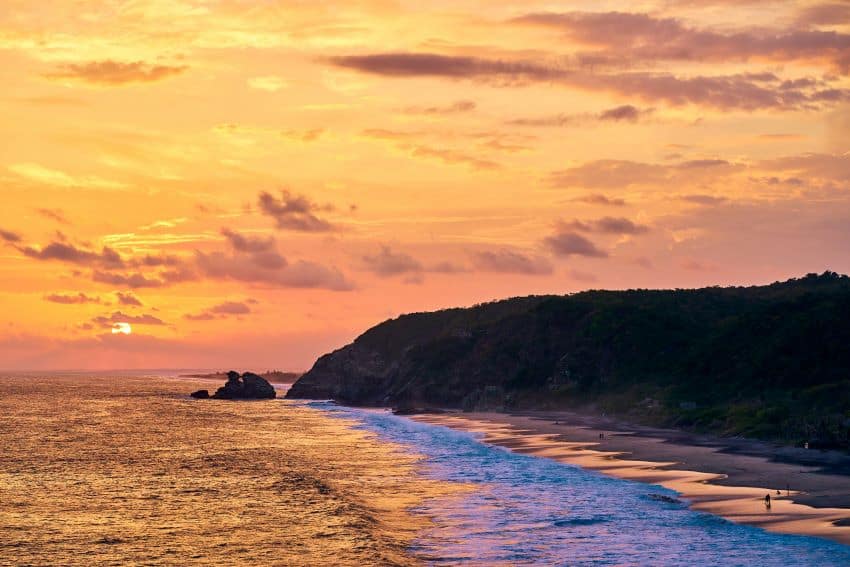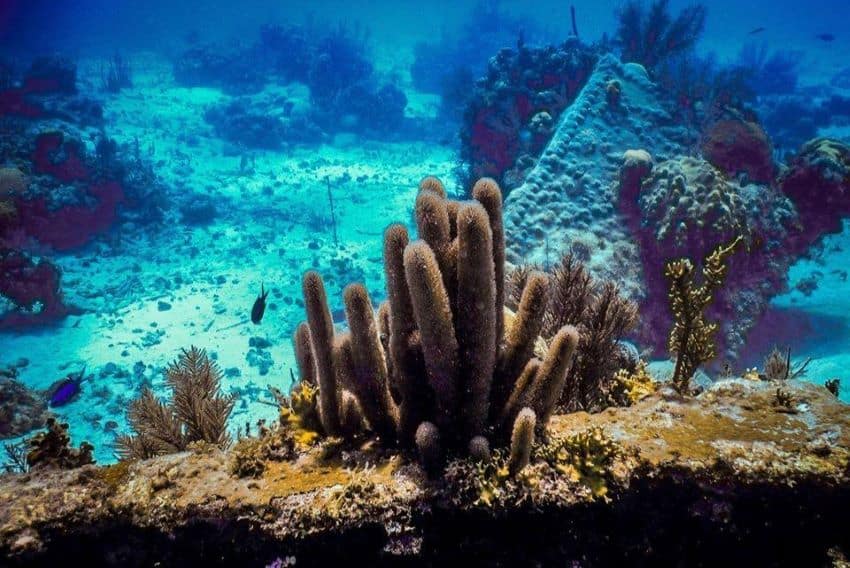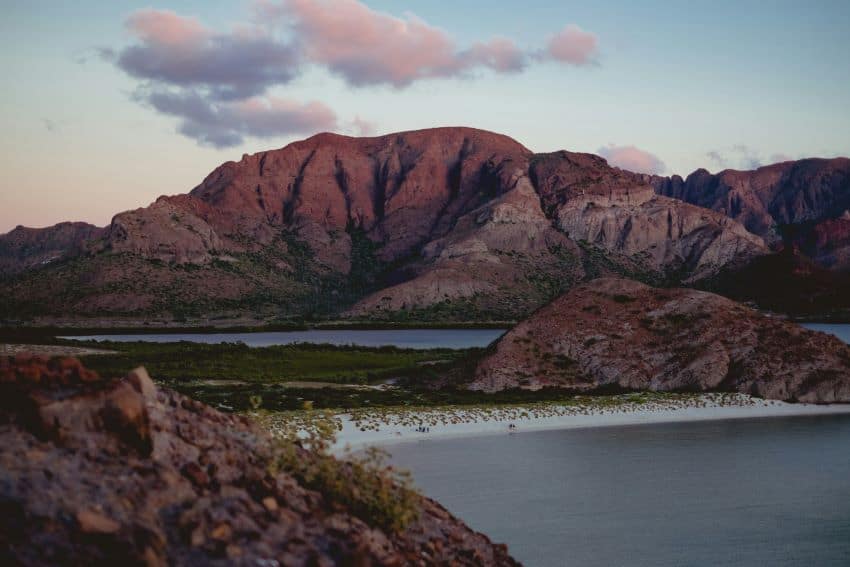Ecotourism is a form of travel that focuses on minimizing environmental impact and maximizing benefits for local communities and nature conservation. This approach seeks to reduce the ecological footprint of travel by choosing sustainable options, such as low-impact transportation, eco-friendly accommodations, activities that respect the natural environment, and support for local initiatives that promote conservation and sustainable development. Mexico has many destinations ideal for ecotourism thanks to its bountiful nature.
Here are some of the best places in Mexico if you want to travel sustainably:
Chiapas

Located in southeastern Mexico, Chiapas is a treasure trove of biodiversity, culture, and breathtaking landscapes. With its lush tropical jungle, majestic waterfalls, ancient Mayan ruins, and vibrant indigenous culture.
Nature: Chiapas is home to one of Mexico’s most biodiverse tropical forests. Travelers can immerse themselves in pristine nature while exploring national parks and biosphere reserves. One of the highlights is the Montes Azules Biosphere Reserve, which hosts an impressive variety of flora and fauna, including jaguars, tapirs, howler monkeys, and many birds. Waterfalls like Agua Azul, Misol-Ha, and Cascadas de Roberto Barrios offer spectacular waterfalls surrounded by vegetation, ideal for swimming, hiking, and enjoying the natural beauty.
Culture: Chiapas is home to vibrant indigenous cultures, where ancestral traditions intertwine with daily life. Travelers can visit the villages of San Juan Chamula and Zinacantán, where they will witness ancient religious practices and traditional crafts. Palenque, with its huge temples and palaces surrounded by jungle, is one of Mexico’s most impressive archaeological sites. Other sites like Bonampak and Yaxchilán offer the opportunity to explore remote ruins amidst nature.
Eco-friendly Accommodation:
Hotel Chan-Kah Resort Village: Located in Palenque, near the famous Mayan ruins. It combines luxury with sustainability, offering comfortable and environmentally friendly rooms. They also offer jungle excursions to explore the local flora and fauna.

Eco Hotel Maya Tulipanes: Located in the Montes Azules Biosphere Reserve, the rooms are built in harmony with the environment and offer stunning jungle views. The hotel organizes bird-watching, kayaking, and guided hikes.
Ecolodge Las Nubes: In the community of Tziscao, near the Guatemalan border. Its rustic cabins overlook the lake and the surrounding mountains. The hotel is committed to conserving the natural environment and offers activities such as boat rides, hiking, and visits to local communities.
Oaxaca
Located on the Pacific coast, Oaxaca is one of Mexico’s most iconic states. With its varied geography, pristine beaches, mountains, valleys, and forests, it offers a unique experience for travelers seeking to explore eco-consciously.
Nature: On the coast, places like Puerto Escondido and Mazunte offer pristine beaches and opportunities for surfing, diving, and whale watching. In the state’s interior, the Sierra Norte de Oaxaca is a paradise for travelers interested in exploring fog forests, spectacular waterfalls, and indigenous communities that preserve ancestral traditions. Destinations such as Hierve el Agua, Sierra Juárez, and the ecological community of Benito Juárez offer unique natural experiences.

Culture: In cities like Oaxaca de Juárez and Ocotlán de Morelos, travelers can explore colorful markets where local products such as textiles, ceramics, mezcal, and traditional food are sold. Ancient Zapotec and Mixtec ruins are another major attraction; sites like Monte Albán, Mitla, and Yagul offer the opportunity to explore the region’s archaeological legacy and learn about the indigenous cultures that flourished here centuries ago.
Eco-friendly Accommodation:
Celeste del Mar: Located in Mazunte, this eco-hotel offers peace and relaxation experience by the sea. The rooms are built with local and environmentally friendly materials, and the hotel has a restaurant serving organic and seasonal food.
Mixtli Ecohouse Zipolite: Located on Zipolite beach, these eco-friendly cabins offer simple and comfortable accommodation in harmony with nature. The hotel also promotes sustainable practices, such as using renewable energy and water conservation.
Santa Catarina Lachatao: Located in the Sierra Norte de Oaxaca, this eco-lodge offers a unique chance to commune with nature. The cabins are built with panoramic views of the mountains. They also offers hiking, bird-watching, and craft workshops with the local community.
Quintana Roo

Located on the Yucatán Peninsula, it is known for its stunning white sand beaches, turquoise waters, and coral reefs. However, beyond its popular tourist destinations like Cancun and Playa del Carmen, Quintana Roo also offers a variety of opportunities for eco-conscious tourism, where travelers can enjoy the natural beauty of the region responsibly and sustainably.
Nature: Quintana Roo is home to a great marine biodiversity, with coral reefs, mangroves, and protected areas that are home to a variety of marine species. One of the main destinations for eco-conscious tourism is the Sian Ka’an Biosphere Reserve, a vast and pristine ecosystem that includes jungles, mangroves, lagoons, and coral reefs. Here, visitors can participate in guided tours to observe birds and manatees, kayak in the mangroves, and snorkel in protected reefs.
The beaches of Quintana Roo are an important nesting site for sea turtles, including species such as the green turtle and the loggerhead turtle. Several local organizations work on conserving these species, protecting nests, educating the community, and offering volunteer programs for travelers interested in contributing.
Eco-tourism in Marine Reserves: Places like the Banco Chinchorro Biosphere Reserve and the Xcalak Reef National Park are popular destinations for diving and snorkeling, where visitors can explore coral reefs and observe an incredible variety of marine life.

Eco-friendly Accommodation:
Azulik: Located in Tulum, this eco-luxury wellness retreat combines unique architecture with a focus on sustainability and well-being. The resort is built in harmony with nature and offers villas and cabins with stunning views of the Caribbean Sea. They promote environmental conservation and offer unique experiences, such as dinners under the stars and natural spa treatments.
Hotel Esencia: This boutique hotel is located in Xpu-Ha, between Playa del Carmen and Tulum. Esencia offers a luxury experience alongside a respect for nature. The hotel is surrounded by tropical gardens and pristine beaches and offers comfortable rooms with sea or garden views. They also promote sustainable practices, such as water and energy conservation.
Hotel Cielo y Selva: Located in the Sian Ka’an Biosphere Reserve, this glamping offers a unique chance to get up close with the wild side of Mexico. Their tents are built with natural materials and equipped with modern amenities. The camp promotes environmental conservation and offers hiking, kayaking, and bird-watching activities.
Baja California Sur

Located at the southern end of the Baja California Peninsula, it is an iconic destination offering a unique combination of natural beauty, marine biodiversity, and local culture. Its stunning desert landscapes, pristine beaches, and crystal-clear waters make it an ideal destination for eco-conscious tourism, where travelers can enjoy nature responsibly and contribute to its conservation.
Nature: This is one of the world’s best destinations for marine life. Places like the Upper Gulf of California, Colorado River Delta Biosphere Reserve, and the Revillagigedo Archipelago Biosphere Reserve offer unique opportunities to observe whales, dolphins, manta rays, whale sharks, and other marine species in their natural habitat. Regional tour operators are committed to sustainable wildlife-watching practices that protect animals and their environments.
Baja California Sur boasts a wealth of pristine beaches and protected areas that offer opportunities for eco-conscious tourism. Places like Cabo Pulmo, a marine reserve that hosts the oldest coral reef in North America, and Espíritu Santo Island, a paradise of deserted beaches and crystal-clear waters, are popular destinations for ecotourism. Here, visitors can enjoy activities such as diving, snorkeling, kayaking, and hiking while contributing to environmental conservation.
Culture: Towns like Loreto, Todos Santos, and La Paz offer the opportunity to explore local culture, gastronomy, and traditions. Many local communities are involved in tourism initiatives promoting sustainable development and preserving local culture and heritage.
Eco-friendly Accommodation:
White Lodge Baja: Located in Los Cabos, this eco-luxury wellness retreat features an on-site spa and 10 private cottages built in total harmony with nature. It’s 45 minutes from the Historic Center of San Jose del Cabo.
Hotel Baja Club: This historic mansion-turned-hotel in La Paz is now one of the most luxurious properties in La Paz. Its architect, Max von Werz, is a fervent advocate of sustainable architecture. In fact, his team rescued original timber beams and restored as much of the original materials as possible to create this beautiful hotel. The property’s onsite Greek restaurant also serves sustainable seafood.
Camp Cecil de la Sierra: In the quiet town of Todos Santos, this luxury tent camp offers glamping on a local ranch in the Sierra Laguna Mountains. In addition to gorgeous views, guests can enjoy homemade food, cultural immersion, and organized tours around the local reserve.
Traveling responsibly in Mexico is possible in protected areas where eco-tourism is ingrained in local policy and culture and everywhere we go. As travelers, we have the opportunity — and obligation — to ensure our impact is positive in our destinations. This is especially important when visiting places not officially designated as protected.
Camila Sánchez Bolaño is a journalist, feminist, bookseller, lecturer, and cultural promoter and is Editor in Chief of Newsweek en Español magazine.
